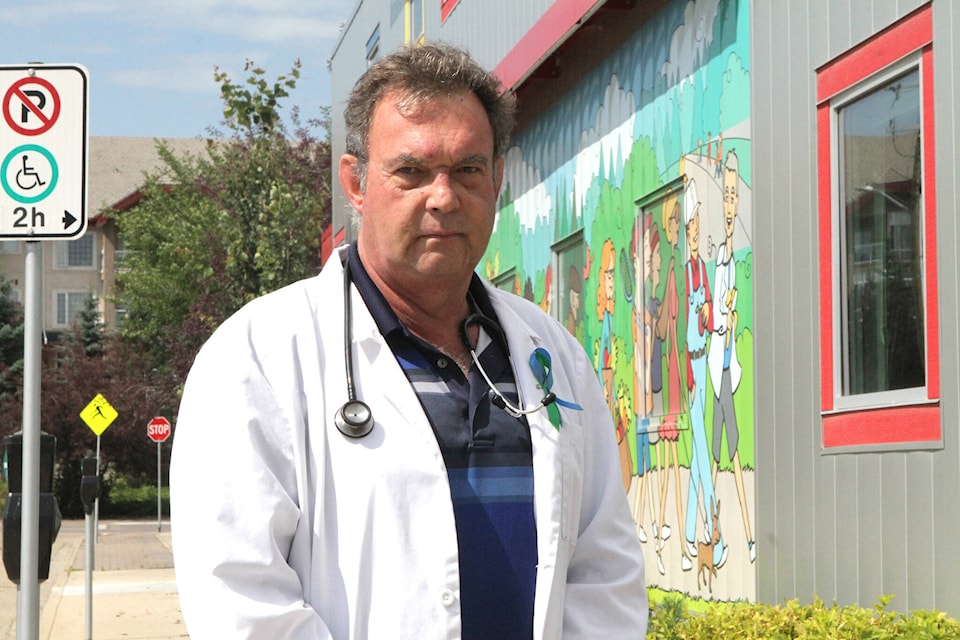Red Deer’s Primary Care Network’s website posts which local family doctors are taking new patients.
Of the 92 physicians listed, only two have room for more patients.
It is a worrisome situation that has been going on for a long time and is happening in communities coast to coast.
“We definitely have a shortage in Red Deer. There’s been a shortage for quite a while,” said Dr. Peter Bouch on Monday.
While medical help is available through walk-in clinics, it is not an ideal option, particularly for those with chronic illnesses, where a doctor’s familiarity with their case can be so valuable.
“(Walk-in clinics) are good for a walk-in-type visit, where you have a cold or you have something that they can deal with fairly quickly that is non-chronic and nothing that’s ongoing for a lengthy period.
“But if you do have some chronic illnesses, it’s tricky to try to find someone.”
Demographics only add to the problem. A growing number of doctors are reaching retirement age. Bouch knows almost a dozen local doctors off the top of his head who will likely retire in the next five to 10 years.
“There haven’t been a lot of younger physicians coming into town, which is disappointing.”
As well, many of the physicians trained through the hospital’s residency program have their eyes on rural practices, which does not help the city’s shortages.
Efforts have been made to recruit doctors from residency programs in Edmonton and Calgary but the time frame is very short when the pitch can be made. After a year or two in residency, doctors have usually made their minds up where they want to go and may have developed family and other ties to their communities and do not want to move.
Recruiting foreign doctors is another option, but it is a lengthy and complicated process.
“There is no easy answer and I have great sympathy out there for people with chronic illnesses who are looking for family doctors,”said Bouch, who has about 1,500 patients on his “panel” and is among those with no room for more.
“My panel is full and I can hardly see all my people who are on my panel. By adding more people would just be unfair to those who have been seeing me for the last 20-plus years.”
Bouch and many other doctors do their best to provide care. Those with pressing health problems get priority and he leaves a number of appointments spots free every morning. But those fill quickly.
While the percentage of older doctors is increasing, so too is the number of older patients requiring higher levels of care.
“A lot of my patients who I have been seeing for a long time are getting older with more medical issues. To see each one takes a little bit longer. It’s not like 20 years ago when my patients were all young and healthy.
Governments need to come up with a long-term 15- or 20-year plan to address doctor shortages, a difficult task, but especially for governments whose political fortunes typically have a much shorter lifespan. Plans laid down by one government may be reversed by the next, a disincentive to embarking on grand projects.
“Really, what we need in medicine is to have a longer plan than a three- or four-year plan.”
Bouch said while most in health care recognize the problems no one has come up with a workable solution so far.
“I really don’t have the answer and I’m not sure there is even an answer. You can train medical students but there is no guarantee they are going to come to Red Deer.”
